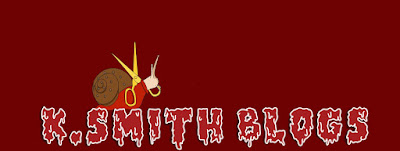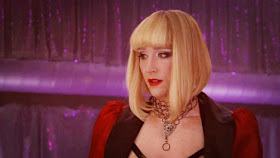"Make it gayer" is a common in-joke within my close circles when it comes to television and film. For every token gay, there's a hundred straight characters, which gets a bit boring after a while: there's only so many cis-het people I can see on-screen before I decide to switch over to something better, like Shadowhunters (2016-2019).
So it was as a surprise when I came across the Twitter for DemonHuntr, a queer-centric series which is currently trying to find its footing and take off. When I read the premise of the show, simply a "diverse group of queer friends who hunt down demons" and "sometimes sleep with them", I had a hunch that this was a show for me.
The Heteronormative Paradigm
So, what exactly is this series and why haven't you heard of it? In essence, DemonHuntr is focused on a friendship between two men, one gay and one straight, who play the roles of mediums: they use the "DemonHuntr app" (hence the name) and go on to solve mysteries and fight the supernatural.
What makes this series different, it seems, is not only its incorporation of technology as opposed to magic (which we can see in its contemporaries e.g. Buffy the Vampire Slayer, Shadowhunters and Supernatural) but it's also incredibly diverse in terms of characters.
One of DemonHuntr's main driving points is that it "brings queerness and diversity to the forefront", including a broad range of races, genders and sexualities. This is almost unprecedented, as the industry currently stands, because most horror/supernatural shows are founded in heterosexuality and white privilege (don't @ me, you know that's true).
What Tim O'Leary, creator of the show, intends to do is give everybody "a seat at the table", a mindset that I wish more showrunners and producers would have: if more people were open-minded to being diverse, we'd have more shows that make us as a community feel validated.
Some initial skepticism
 |
| Eragon (2006) |
However, despite my excitement for this project, I had a few concerns. Firstly, there will undoubtedly be some bigoted cis-het people who are going to throw a tantrum when they find out that they don't make up the majority of people shown on-screen: I know that's completely stupid but I can't ignore the fact that, whilst I don't think they need anymore representation in the horror/fantasy genre as it is, it would be exclusion if the series flat-out rejected the idea of including them at all.
Secondly, the range of diversity is wonderful, but DemonHuntr could easily fall into one of those productions that accidentally pigeonholes characters into bland, unimaginative stereotypes, which would further hinder LGBTQ+ representation instead of celebrating it.
So, I had a correspondence with the show's aforementioned writer/creator, Tim, to iron out these details.
"Straight, white men aren't excluded from DemonHuntr," he explains, "because no one is excluded from DemonHuntr. Our show takes place in a world where absolutely everyone is accepted for who they are."
"We're not saying LGBTQIA people can come to the party and straight people can't - we're saying everyone can come to the party."
Following on from this, Tim responds to the idea of pigeonholing characters into stereotypes by stating that "none of [the] characters leaned too heavily on them" and that the reasoning behind having the main focus on Asian-American, Latinx and African-American people was because he hadn't seen them shown properly on TV before (at least not all together), "which is why [he] wanted to write them".
Artistic license
 |
| Forbidden (2018) |
Something that deeply fascinated me about this response was "everyone is accepted for who they are". Within LGBTQ+ culture, we're often represented in the media as having undergone some kind of trauma or backlash to be in the stable (or in some cases unstable) position that we find ourselves in at the end of the narrative, but for DemonHuntr, it seems this alternate universe is far more accepting than our current one.
When asked about whether the queer characters we'd see on-screen would deal with the hardships of being openly queer, Tim responded, "the short answer is no - none of the characters struggle with anything having to do with their sexual identity or how that fits into the greater world."
It reminded me a lot of Todrick Hall's visual album, Forbidden (2018), and how homosexuality took place in an alternate version of our world that saw it as the foundation of our society: being queer was normalised (to a degree).
Tim explains that there will be scenes in which we see characters defining themselves but that "no judgment" is attached to that because there's shouldn't be anything inherently bad about being open about yourself. He goes on to say, "[...] there is absolutely still a place for stories about people coming out, about dealing with the hardship related to sexuality, and the struggle over identity. The need for those stories hasn't gone away, and I'd be lying if I said I didn't tear up every time I see a film like that."
But Tim and his team are doing something that I think every queer person can resonate with: he's trying to produce something that is aspirational, that omits discrimination and the ugliness of homophobia, racism and queer erasure. He defines his characterisation of the people in the show as writing protagonists "who are queer without their queerness being their defining trait", a sentiment that mirrors my own (as you may have seen from the queer-coding article I did a few weeks ago).
This will be a show for everyone that promises not only representation but, more importantly, acceptance.
Moving forward
As of right now, DemonHuntr is crowdfunding to get the project up and running into production stages: they've amassed a whopping $10,000 already in less than a week, a clear thumbs up for getting it well on its way to realising its potential.
You can help them out by donating to their page and getting them to their goal of 36k, which goes towards cast wages, production, special effects and all sorts of things to get everything moving (a breakdown of costs are listed on the site).
If you'd like to keep updated on how the show is progressing, you can follow their socials as listed below. I'd like to thank Tim O'Leary and also Robert Rice (producer and actor on the show) for being so kind and letting me have a chat with them about their passion project.
Social medias:
- K














